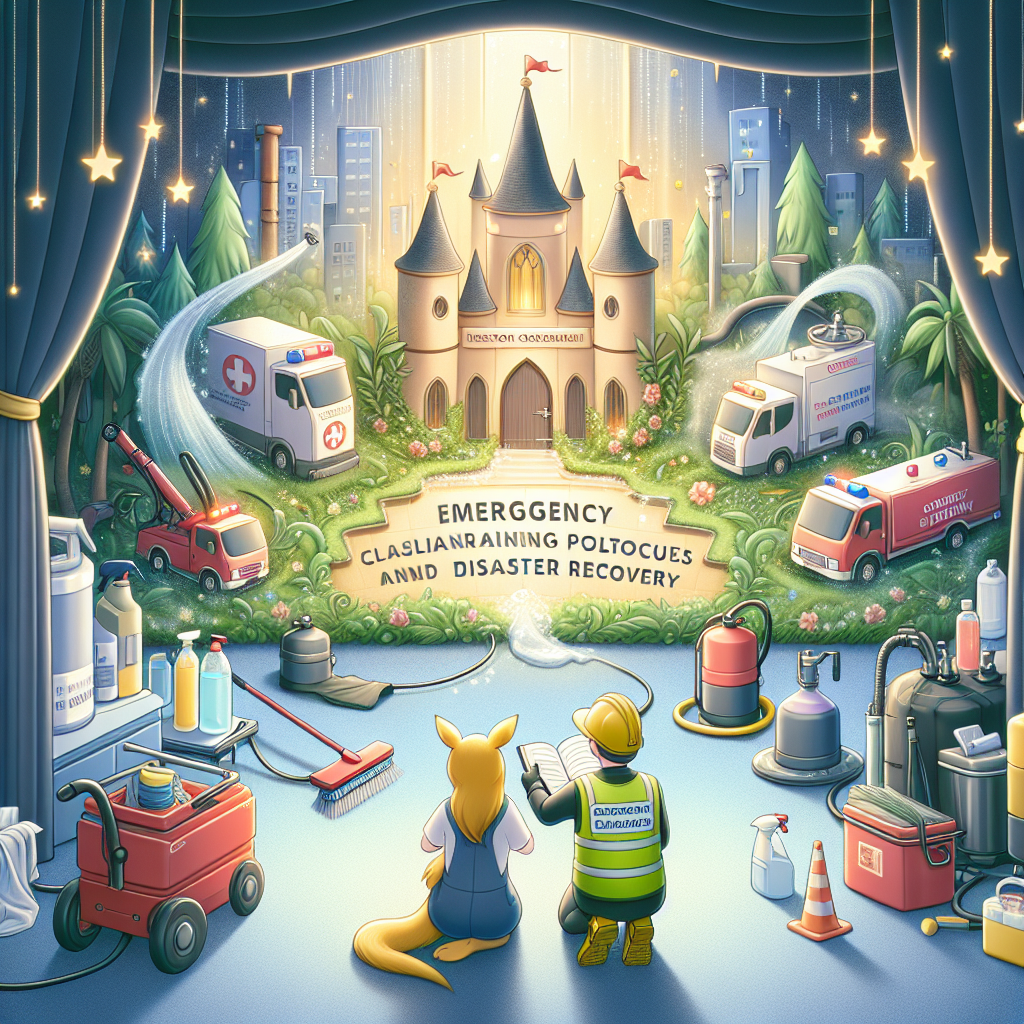When disaster strikes, whether it's a flood, fire, or other emergency situation, having robust emergency cleaning protocols in place is crucial for effective disaster recovery in the hospitality industry. These protocols are designed to ensure a swift and efficient response to minimize damage, ensure the safety of guests and staff, and expedite the restoration process. By implementing proactive emergency cleaning measures, hotels, restaurants, and other hospitality establishments can bounce back quickly and maintain their reputation for cleanliness and safety.
Importance of Emergency Cleaning Protocols
Establishing clear and comprehensive emergency cleaning protocols is essential for disaster recovery in the hospitality industry. These protocols serve as a roadmap for staff to follow in the event of an emergency, ensuring that everyone knows their role and responsibilities during a crisis.
- Rapid Response: Emergency cleaning protocols enable staff to act quickly and decisively, minimizing the impact of the disaster and preventing further damage.
- Safety First: Prioritizing the safety of guests and employees is paramount in any emergency situation. Proper protocols help ensure that everyone is evacuated safely and that hazardous materials are handled correctly.
- Damage Control: Effective emergency cleaning protocols help contain the damage caused by the disaster, protecting property and assets from further harm.
Key Components of Emergency Cleaning Protocols
Training and Education: Ensure that all staff members are trained on emergency cleaning procedures, including how to use protective equipment, handle hazardous materials, and operate cleaning equipment safely.
Communication Plan: Establish clear communication channels for staff to report emergencies and receive instructions. Implement a system for notifying guests about emergency procedures and evacuation routes.
Inventory and Equipment: Maintain an updated inventory of cleaning supplies and equipment needed for emergency response. Ensure that all equipment is in good working condition and easily accessible in case of an emergency.
Implementing Emergency Cleaning Protocols
To effectively implement emergency cleaning protocols, hotels, restaurants, and other hospitality establishments should follow these steps:
- Develop a detailed emergency cleaning plan that outlines roles, responsibilities, and procedures for different types of emergencies.
- Conduct regular training sessions to ensure that all staff members are familiar with the emergency cleaning protocols and can respond quickly and effectively in a crisis.
- Test the emergency cleaning plan through drills and simulations to identify areas for improvement and ensure that staff are prepared to handle real emergencies.
Best Practices for Emergency Cleaning
Prioritize Safety: Always prioritize the safety of guests and staff during an emergency. Ensure that everyone is evacuated to a safe location and that emergency services are contacted if necessary.
Use Personal Protective Equipment (PPE): Provide staff with the necessary PPE, such as gloves, masks, and goggles, to protect them from exposure to hazardous materials during the cleaning process.
Follow Proper Cleaning Procedures: Adhere to established cleaning procedures and protocols to ensure thorough cleaning and disinfection of affected areas. Use EPA-approved disinfectants for effective sanitization.
Conclusion
In conclusion, having well-defined emergency cleaning protocols is essential for disaster recovery in the hospitality industry. By establishing clear procedures, providing staff training, and maintaining proper communication channels, hotels, restaurants, and other hospitality establishments can effectively respond to emergencies and minimize the impact on their operations. Remember, preparation is key to successful disaster recovery, so take proactive steps today to ensure that your establishment is ready to handle any crisis that may arise.



